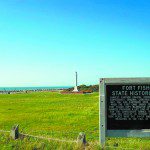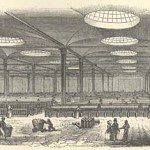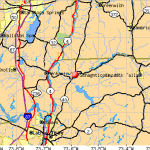Over the past month, I’ve discussed the entry for Schaghticoke in Horatio Spafford’s 1813 “Gazetteer of New York.” Mr. Spafford, strapped for money, had ambitions to write many more Gazetteers, covering a wider geographical area, but was only able to produce one other edition, another New York Gazetteer in 1824. He died in 1832.
As one would expect, much of what Spafford published in 1824 was a duplicate of the 1813 edition. Things such as history and land types would be unchanged, one would think, but let’s see what had changed in the entry for Schaghticoke. To begin with, Schaghticoke was now 16 rather than 20 miles from Albany, though still 10 miles north of Troy. My GPS tells me that it’s 19 miles from Schaghticoke to Albany, though who knows where the measurements would begin or end, then or now.
Full article in the February 27th issue of the Express.




